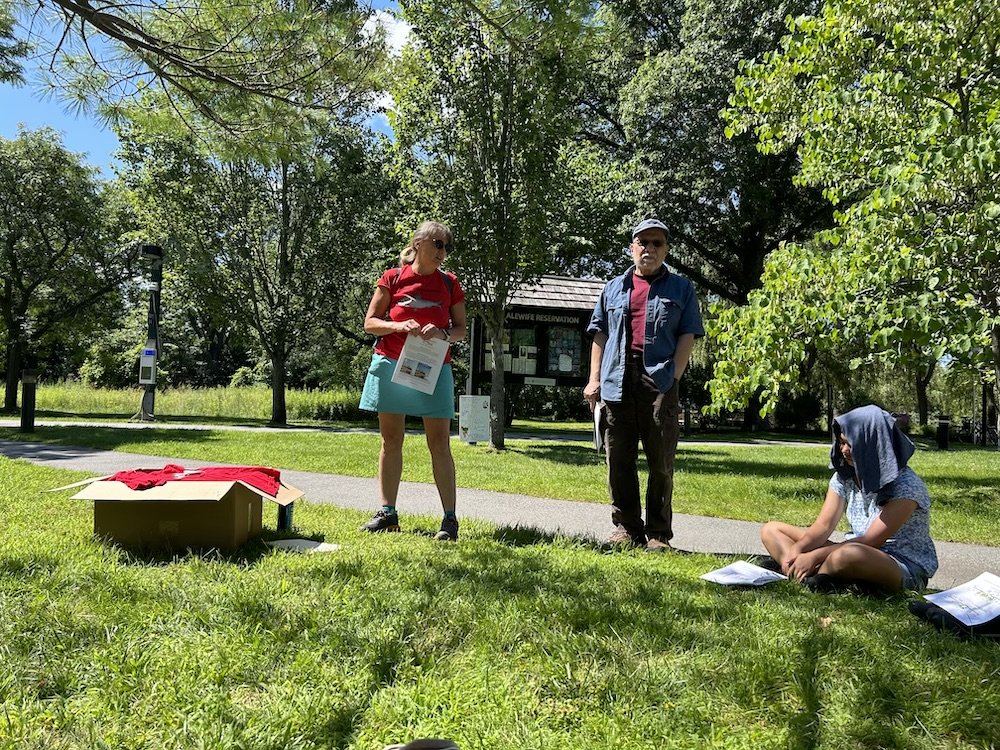Miyawaki Forests, Watering in a Drought, and big news for Alewife Brook
If you haven’t heard about the idea of Miyawaki Forests yet, chances are you will soon. The New York Times published an article “Tiny Forests with Big Benefits” outlining the calculated ecological benefits of planting extremely dense small pocket forests, originally brought to light by Japanese botanist Akira Miyawaki. Jean was lucky enough to be a part of the first Miyawaki Forest in the Northeast in 2021 located at Danehy Park in Cambridge. This article mentions Danehy and provides some current photos of its progress. While the idea behind these densly populated forests provides rapid growth rates, soil reconstruction, biodiversity, and wildlife habitat, there are many critics stating that the efforts are not only expensive, but the biodiversity levels go down after a few years. Even Doug Tallamy has stated that it may be more important to focus on fewer plants to make sure of their survival. However, the research has proven that the burst of growth is the focus of these plantings which allows them to sequester more carbon, stabilize more soil, and provide more biodiversity to wildlife in a shorter amount of time than it takes for individual trees to become a mature forest. Our takeaway? Keep on planting and add in pollinator gardens to compliment these mini forests! Currently Jean is in the very early stages of discussion with other friends of Danehy Park to make this a reality. To learn more about the planting of Danehy’s Miyawaki forest, check out this article from Boston.com in 2021, and Sugi Project’s report of plantings and statistics.
Secondly, as climate change continues to provide us with unstable weather patterns, Rebecca McMakin (previously the Director of Horticulture at Brooklyn Bridge Park, landscape designer, and native plant specialist) has written a blog post with tips to watering your garden in a drought. While many of her suggestions may seem counterintuitive, read the entire article to understand what Hydrophobia is and how we can prevent it in our gardens!
And lastly, a huge congratulations to our friends at STAB (Save the Alewife Brook) for securing $100,000 through the state’s first budget approved by Governor Maura Healy. The funding goes through Mystic River Watershed Association, and will be used for research around hydraulic and dredging studies. The goal of this research is to secure more funding on a State and Federal level to address the problems of poor water quality and flooding in Alewife Brook, with the long-term goal to de-channelize the Brook all together. This is a huge win for them, and we cannot wait to see what they will accomplish. For more information about this project and Save the Alewife Brook visit their blog here.
Kristen Anderson and David White of STAB talking to our Biodiversity Builders this August.

